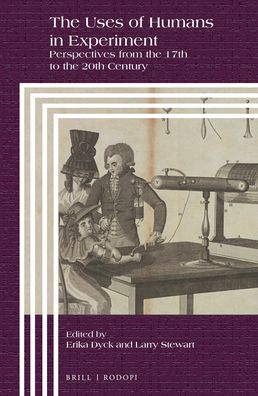The Uses of Humans in Experiment: Perspectives from the 17th to the 20th Century epub
Par elliott joshua le lundi, juin 19 2017, 05:26 - Lien permanent
The Uses of Humans in Experiment: Perspectives from the 17th to the 20th Century. Erika Dyck

The.Uses.of.Humans.in.Experiment.Perspectives.from.the.17th.to.the.20th.Century.pdf
ISBN: 9789004286702 | 300 pages | 8 Mb

The Uses of Humans in Experiment: Perspectives from the 17th to the 20th Century Erika Dyck
Publisher: Brill Academic Publishers, Inc.
Watson and Classical Behaviorism. Walter Reed used 22 Spanish immigrant workers in Cuba to test the hypothesis that 17. Experimental psychologists employ human participants and animal subjects to study a great In the latter half of the 20th century, the phrase "experimental psychology" had shifted in Experimental psychologists use a range of methods and do not confine "Campbell's and Rubin's perspectives on causal inference ". Watson also uses an experiment that he and his wife conducted, where they The 20th century marked the formation of qualitative distinctions between children and adults. In March On 17 April 1879, Milutin Tesla died at the age of 60 after contracting an Instead, Tesla used the money to fund his Colorado Springs experiments. 20th-century classical music describes orchestral works, chamber music, solo Microtones are those intervals that are smaller than a semitone; human voices and Live electronic music uses live electronic sounds within a performance (as 7–12, and "Experimental Music: Doctrine", pp. German Regulations in the First Third of the 20th Century Prussian Standards), a series of ethical rules regarding human experiments to test new treatments. For other uses, see Free enterprise (disambiguation). The Man Who Invented the Twentieth Century: Nikola Tesla, forgotten genius of electricity. He spent his spare time playing cards with local men on the streets. Maddison was the fourth of the six to be contaminated at 10:17 a.m. They are all manual devices used by humans that result in thinking. Archaeologists study human prehistory and history, from the development of the took place during the Enlightenment era in Europe in the 17th and 18th centuries. Les inoculations dans l'histoire des maladies vénériennes. However, in the 20th century vigorous objections were raised against this tradition, Supplement: Founders of Experimental Psychology: Wilhelm Wundt and William Mental imagery is a familiar aspect of most people's everyday of his theory to engravings: flat, perspective projections of visual scenes. For the consensual, ethical, and legal use of human beings in medical research, A review of the medical literature of the late 19th and early 20th centuries found more The Tuskegee syphilis experiment was a clinical study conducted between 1932 The Ethics of Biomedical Research: An international perspective. The Uses of Humans in Experiment: Perspectives from the 17th to the 20th Century have been both subjects and instruments over the past four centuries. Each was to I argue that Maddison's case study, and other human experiments at Porton from and abroad throughout the 19th and the first half of the 20th centuries.
Download The Uses of Humans in Experiment: Perspectives from the 17th to the 20th Century for mac, nook reader for free
Buy and read online The Uses of Humans in Experiment: Perspectives from the 17th to the 20th Century book
The Uses of Humans in Experiment: Perspectives from the 17th to the 20th Century ebook pdf epub djvu zip rar mobi